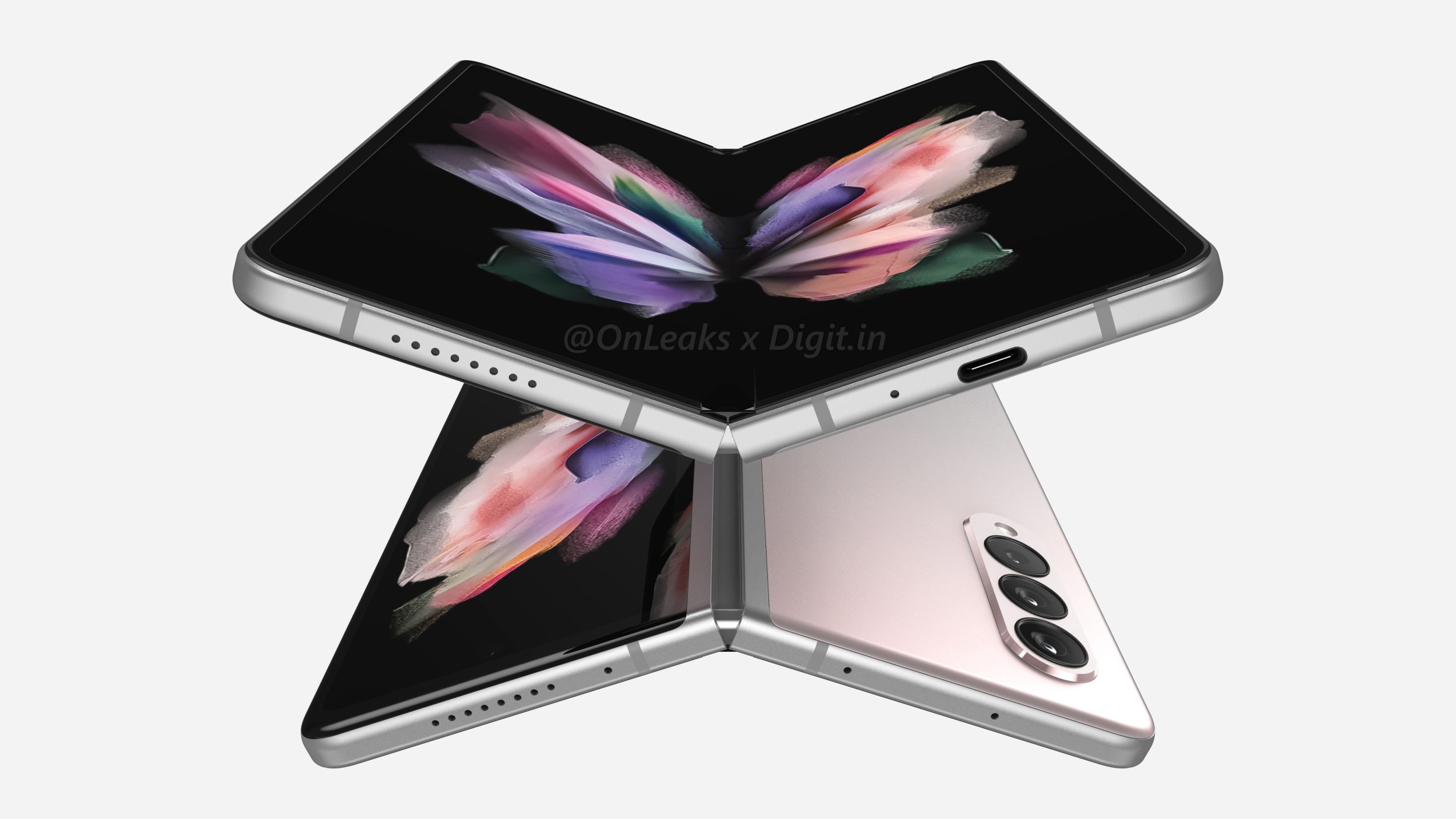Samsung Galaxy Z Fold 3 — here's how Samsung could make you want a foldable
The Galaxy Z Fold 3 will need a lower price and more use cases to get shoppers excited

The Samsung Galaxy Z Fold 3 is expected to debut next month at a Samsung Unpacked event, and we’ve already heard a lot about what the new foldable phone could offer. The rumored upgrades include an under-display camera for the large interior 7.5-inch display, a more durable design and, of course, a faster Snapdragon 888 processor.
But the biggest change could be support for the S Pen, which would provide a major productivity boost for people who want to take notes, sketch or annotate documents on a larger canvas. After all, if you’re going to have a phone that transforms into a tablet, why not make the most of the expanded display?
- Samsung Galaxy Z Flip 3: Samsung's smaller foldable is coming
- Foldable phones are too expensive — I'd never pay $1,200+ for Galaxy Z Flip 3
- Plus: Samsung Galaxy Buds 2 design reportedly leaked amid price rumors
However, an S Pen won’t necessarily make the Galaxy Z Fold 3 that much more compelling than the Galaxy Z Fold 2, and even then it will largely depend on how it’s implemented. And in speaking to various mobile analysts, what Samsung does with price this time around and demonstrating new use cases for foldables will have much more of an impact than an accessory.
Galaxy Z Fold 3: S Pen pros and cons
To be clear, having S Pen support would be a welcome addition to the Galaxy Z Fold 3. It would be much easier to take notes in meetings, mark up presentations and especially sketch on a larger display. Yes, there is a big difference between the 6.8-inch panel on the Galaxy S21 Ultra and a 7.5-inch screen on the Z Fold 3.
As much as the Z Fold series is about content consumption, it’s also about content production, and that’s where the S Pen comes in.
Ramon Llamas, IDC
“A larger display size would mean a larger space for notes or a bigger canvas for drawing, said Avi Greengart, founder of Techsponential. “The S-Pen would fit perfectly with the Z Fold’s focus on productivity,”
In a way, the Galaxy Z Fold 3 could take the place of the Galaxy Note 21, which Samsung has reportedly shelved for this year. And if you’re going to be charging upwards of $2,000 for a foldable phone, it better be able to handle at least some of the functions of a professional tablet or laptop.
“The S Pen started out as the tool for the larger canvas when that larger canvas was just the Note. Bringing it to the Z Fold 3 seems like a natural progression for both the S Pen and the Z Fold 3,” said Ramon Llamas, research director for IDC. “Because as much as the Z Fold series is about content consumption, it’s also about content production, and that’s where the S Pen comes in.”
Sign up to get the BEST of Tom's Guide direct to your inbox.
Get instant access to breaking news, the hottest reviews, great deals and helpful tips.
But where will the S Pen go, exactly? Part of the reason the S21 Ultra’s S Pen implementation falls flat is that you need to buy a separate case to store the stylus. There’s no holster in the phone. And given how large the S21 Ultra already is, it gets even bulkier when you add a case with a slot built in.
Samsung could add a slot for the S Pen in the Galaxy Z Fold 3, but it would need to make other trade-offs, such as a possibly smaller battery. Sure enough, the Z Fold 3 reportedly features a smaller battery than the Galaxy Z Fold 2 (4,380 mAh vs 4,500 mAh) but we do not know the reason behind this.
“If there’s no convenient place to store an accessory such as a pen, it makes that element easier to lose and will be a deterrent for users who don’t highly value the pen as part of the offering,” said Tuong Nguyen, senior principal analyst for Gartner.
Galaxy Z Fold 3 price: Can Samsung lower it enough?
While supporting the S Pen can certainly add to the Galaxy Z Fold 3’s overall appeal, it likely won’t be the tipping point for shoppers considering a foldable phone. A more important consideration is price.
Foldables are inherently exciting. The challenge is convincing consumers that now is the time to buy a foldable, and that requires lower pricing.
Avi Greengart, Techsponential
The Galaxy Z Fold 2 started at $1,999, but it has since dropped to $1,799. Regardless, that’s more than the cost of two iPhone 12 handsets.
The good news, at least according to one report, is that Samsung may be lowering the price of the Galaxy Z Fold 3 by as much as 20%. This could be due to the fact that Samsung has realized some cost savings in its production of foldable panels.
“Foldables are inherently exciting,” said Greengart. “The challenge is convincing consumers that now is the time to buy a foldable, and that requires lower pricing.”
There have also been rumors that Samsung could introduce a Galaxy Z Fold Lite type of product, something that delivers most of the benefits of foldable phones while taking away some of the bells and whistles. So, for example, a lower-cost Z Fold may not support the S Pen at all.
A lower price wouldn’t hurt,” said Llamas. “Samsung could introduce a good/better/best lineup to broaden its reach. It’d be a question of which features to keep and which ones to remove. 5G vs 4G LTE variants? Different resolution screens? Different cameras? Remember, the changes have to matter to customers instead of something that’s mostly incremental or cosmetic.”
Galaxy Z Fold 3: We need more than ‘wow’ factor
Now that the novelty for foldable phones is starting to wear off — at least among early adopters — Samsung needs to demonstrate that this category has real staying power. And in order to do so, the company must hammer home use cases for the Galaxy Z Fold 3 that will improve our day-to-day lives.
“We’re at a point in the market where we have a very strong emphasis on value. While lowering the price on any device would make it more appealing, it comes down to the value the product provides me,” said Nguyen.
That means Samsung also needs to show off more apps that take advantage of foldable displays, whether they work in multiple modes or make it easy for you to drag and drop content from one window to another. Or it could be games that leverage the larger canvas in new ways.
“In other words, how does a pen, or a foldable device, make it worthwhile to spend money on replacing my phone?,” Nguyen added. “This was much more obvious when the market was transitioning from feature phones to smartphones.”
Mark Spoonauer is the global editor in chief of Tom's Guide and has covered technology for over 20 years. In addition to overseeing the direction of Tom's Guide, Mark specializes in covering all things mobile, having reviewed dozens of smartphones and other gadgets. He has spoken at key industry events and appears regularly on TV to discuss the latest trends, including Cheddar, Fox Business and other outlets. Mark was previously editor in chief of Laptop Mag, and his work has appeared in Wired, Popular Science and Inc. Follow him on Twitter at @mspoonauer.

